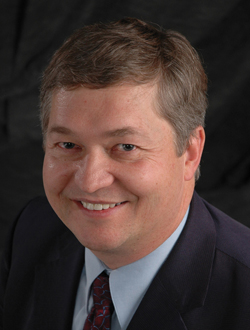Richard B. Brown
2001–2003 | Interim Chair of Electrical Engineering and Computer Scinece

Prof. Richard B. Brown led the department through significant structural changes during his two years as Interim Chair of EECS, a position he assumed after serving as Associate Chair of the Electrical Engineering Division for four years.
Under his watch, though initiated under previous chair Pramod Khargonekar, the department’s structure changed. Under pressure from the Computer Science faculty for greater visibility, autonomy, and influence over policy, the EECS Department adopted a two-division structure: Electrical & Computer Engineering and Computer Science & Engineering.
Brown received his bachelor's and master's degrees in electrical engineering from Brigham Young University. Following graduation, he designed computers and instrumentation in California and Missouri. He returned to school at the University of Utah in 1981 and received an electrical engineering Ph.D. in 1985, joining Michigan after graduation.
He was a leader in establishing the integrated circuit design (VLSI) program at Michigan, now an active and high-profile area of research. In addition to his work in integrated circuit design, Brown conducted major research projects in the development of sensors (for ions, heavy metals and neurochemicals) and microprocessors (high-performance, low-power, and mixed-signal). He was the Micropower Electronics task leader at U-M’s NSF Wireless Integrated Microsystems Engineering Research Center, and earned several teaching and research awards at Michigan. He was named Arthur F. Thurnau Professor for his contributions to undergraduate education.
Brown has served on NSF, ASME and DARPA advisory committees for emerging technologies and VLSI education, and on two national advisory committees at other universities.
In July 2004, Brown stepped away from U-M to be appointed the eleventh Dean of the College of Engineering at the University of Utah.
He has 17 patents, and was a co-founder of four companies: i-SENS (glucose sensors), Sensicore (chemical sensors), Mobius Microsystems (all-silicon clock generators), and e-SENS (water chemistry sensors). As of 2017, he still serves as CEO of e-SENS, which manufactures solid-state chemical sensors for measuring analytes in clean water.
References and Further Reading


